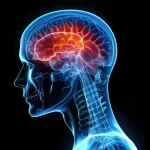Researchers at the Marshall University Joan C. Edwards School of Medicine have unveiled new insights into the intricate workings of nicotine on the human brain, shedding light on how different brain regions respond to nicotine’s effects based on dosage, sex, and specific neural circuits.
Published in eNeuro, the study delves into the complex interplay between nicotine and key brain regions associated with reward and aversion, offering a nuanced understanding of nicotine addiction. Led by Nathan Olszewski, a biomedical research doctoral student at Marshall University, and supervised by Brandon J. Henderson, Ph.D., the research challenges conventional assumptions about nicotine’s impact on the brain.
“The findings from this study highlight the diverse effects of nicotine on the brain, underscoring the need for personalized approaches to nicotine addiction treatment,” said Olszewski.
Central to the study is the medial habenula (MHb), a brain region known for regulating nicotine aversion. Through a vapor-inhalation model of nicotine self-administration in mice, the researchers observed fluctuations in MHb activity, influenced by factors such as nicotine dosage, the presence of menthol, and the sex of the subjects. Surprisingly, these fluctuations were not mirrored in reward centers like the ventral tegmental area, challenging previous assumptions about nicotine’s impact.
“Our study reveals that nicotine affects crucial brain regions differently, highlighting the complexity of nicotine addiction,” explained Henderson. “This underscores the importance of exploring novel brain circuits involved in nicotine dependence.”
Utilizing patch-clamp electrophysiology and fast-scan cyclic voltammetry, the researchers elucidated changes in neuronal excitability and dopamine release dynamics in response to nicotine dosage and sex. The study underscores the necessity of exploring brain areas beyond the traditional focus on reward centers, emphasizing the role of aversion circuits in nicotine addiction.
Moving forward, the research team aims to further investigate the interplay between the MHb and the interpeduncular nucleus (IPN), a critical aversive pathway in nicotine addiction. Future studies will employ advanced techniques such as confocal microscopy and RNA-fluorescent in situ hybridization (FISH) to unravel the molecular mechanisms underlying nicotine’s effects on this aversive circuit.
“This study paves the way for future research into the intricate neurobiology of nicotine addiction, offering new insights into potential targets for intervention,” said Samuel Tetteh-Quarshie, a Ph.D. student and co-author on the study.
Supported by grant funding from the National Institute on Drug Abuse (NIDA), the study represents a significant step forward in understanding the complexities of nicotine addiction and underscores the need for personalized approaches to treatment.











